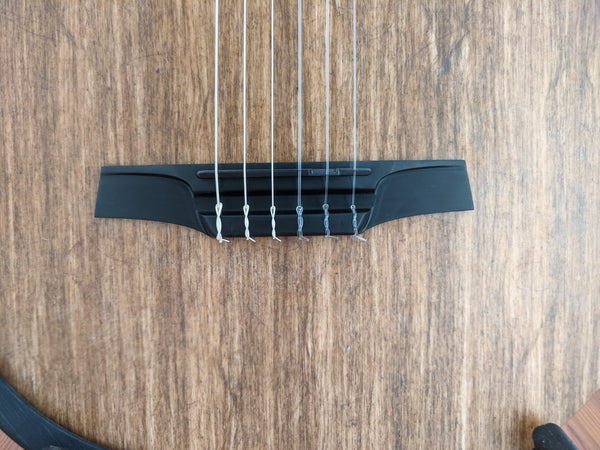Ever since launching Clara, a concert ukulele made of our own Ekoa® fiber, folks wanted to understand it and how it compares with carbon fiber. The latter having been our tone material of choice for the previous 8 eight years. To understand the differences, it helps exploring the greater context of composites manufacturing in general as well as Blackbird composite process specifically. We use carbon fiber bracing, plates as well as different thicknesses and fabric types to achieve a desired mechanical objective: optimal stiffness-to-weight ratio. Having more options is intrinsically good, so adding to the mix now offers lower density, a new mechanical dimension to better optimize for a 'vintage' tone. Ekoa brings that warmer, 'woodie' sound through out including soundboard, bracing and bridge plate. To achieve a wonderful and still warm sound to the carbon fiber instruments, Blackbird has been using similarly low density Aramid (commonly known by tradename Kevlar) since the early days for vibration damping which 'warms-up' the sound. So the two materials can be used to achieve a specific sound and tailor the instrument down to the last tonal detail and get us the tone we're seeking and in the case of Ekoa, it's a vintage sound.
Clara ukulele and now our El Capitan composite guitar have all the mojo hithertofore only found in vintage instruments. It's actually made from Ekoa-brand high-performance, eco-friendly linen fiber composite for all the stability of carbon fiber but the look, feel and sound of wood. With the El Capitan guitar, musicians get what was previously unobtainable — the experience of a premium, vintage old-growth wood instrument in a lightweight, durable and sustainable package. The naturally vibration dampening Ekoa is lower density than old growth spruce but stiffer and in two directions rather than only one.
Related Post: Ekoa Tensile Strength
Leave a comment
Comments will be approved before showing up.


